Belt-tightening by consumers has led to expanding breakfast sales, reports Aidan Fortune. Here’s how to make sure you get your share
The continuing poor economic climate has been responsible for many things an increase in VAT, fewer holidays in the sun and the British public keeping a closer eye on the pennies. However, every cloud has a silver lining and cash-strapped consumers are attempting to save money by eating breakfasts at home more regularly.
“One of the effects of the recession has been to boost breakfast consumption in the home as consumers have looked at ways to pare back their spending,” says Müller Dairy marketing director Lee Rolston. “Whereas they may have shelled out £3-£4 or more picking up a coffee and pastry from a café on the way to work or buying breakfast in the workplace, recession savvy consumers have reined in this ‘discretionary’ spend by breakfasting at home instead, and this trend doesn’t show any signs of slowing down as yet.”
retailer’s view
“There have been a lot of promotions on cereals lately so that has helped sales. The usual brands always do well Kellogg’s and Nestlé. We stock a good range of cereals, making sure we cater for all types. Porridge is becoming quite popular, especially ones with flavours in them. “Bread is always a solid seller and we have a decent range of spreads such as honey and peanut butter so that customers can pick up both at the same time when they’re in.”
Bob Gibson, Premier, Basingstoke, Hampshire
Rolston adds that there is opportunity to be had by grouping items in the breakfast category, thanks to changing consumer habits. “The other emerging trend is the increase in the number of food items people are consuming at breakfast,” he says. “Over the past decade, breakfasts had become less complex with a reduction in the number of items consumed, but since the recession there has been an increase in the number of breakfasts featuring three or more items, indicating that people are filling up at the start of the day to avoid temptation ‘top-ups’ during the morning.”
He says that this trend is also having an effect on on-the-go breakfast sales. “While this may not be such good news on the ‘grab and go’ breakfast front, this trend could actually add up to a lot of opportunities for convenience store retailers as consumers use c-stores to do their top-up shopping, and it’s worth cross-promoting and placing breakfast products as closely together as possible in the store,” adds Rolston.
Top 10 1 Weetabix
2 Crunchy Nut
3 Kellogg’s Corn Flakes
4 Special K
5 Coco Pops
6 Rice Krispies
7 Cheerios
8 Shreddies
9 Special K Red Berries
10 Frosties
Source: IRI four weeks to November 6 2010Cereal thrillers
Experimenting with your breakfast ranges is advocated by Kellogg’s spokesman Gareth Lucy. He advises retailers to be open-minded about their range, especially when it comes to ready-to-eat cereals. “While keeping to the core range will ensure a constant flow of business, we advise retailers to be quick with stocking npd,” he says. “New lines always receive a lot of press coverage and advertising support, so consumers are on the lookout for them and keen to try the newest products.”
Lucy advises retailers to highlight new products with off-shelf promotions to encourage impulse purchasing. “It works as a great reminder to shoppers if they have seen or heard about a new product, but haven’t necessarily made a specific trip to purchase it,” he adds.
Despite plenty of innovation in ready-to-eat cereals and much trumpeting of new lines, the sub-category has seen a 4.6% decline in value in the past year. Lucy maintains that this is down to the push towards value for consumers. “There has been a lot of promotional activity in the category this year and this has largely contributed to the decline in value,” he says. “The challenge for Kellogg’s in 2011 is to find the happy medium where we are providing value for retailers and the consumer,” he adds.
While the ready-to-eat cereals market is going slightly soggy, the hot cereal breakfast category is heating up. Undergoing a 13% year-on-year sales growth (Nielsen MAT week ending October 30, 2010), the sub-category represents a good opportunity for retailers. Quaker brand manager Hayley Stringfellow advises retailers to stock accordingly, and to accommodate seasonal change. “This growth should be reflected in the space allocated on fixtures, which should be increased further during winter when the demand for hot cereals will be even greater.”
However, hot cereals aren’t just confined to cold mornings. “Porridge is no longer seen solely as a winter warmer,” says Quaker general manager David Murray. “The hot cereal category continued to demonstrate strong year-on-year growth throughout the summer months (up 10.3% April to August 2010 vs same period last year, Nielsen total coverage).”
Use your loaf
While it’s a staple of the convenience store offering, bread is still an area that retailers need to work at to ensure continued success. Hovis category manager Tom Gulliver says that multi-loaf deals in the multiples have hit convenience stores’ bread sales and that independents need to use promotions to remind customers to buy in their store. He says that wrapped bread is worth £1.8bn annually (IRI 52 weeks ending May 15, 2010) and that 98% of UK households buy it 48 times a year (Kantar 52 weeks ending May 16, 2010) so there is opportunity in the market if the offering is right. “Many convenience stores concentrate on standard 800g white bread, but this represents less than half of the bread sold in the market,” adds Gulliver. “Healthier white, granary and seeded breads not only command higher price points and deliver better margins, but they are also driving growth in the category.”
Spread the love
Retailers should be offering as wide a range of breakfast products as possible and one area that could be exploited is spreads. The market is up 3.3% year-on-year (Nielsen week ending October 10, 2010) with chocolate spread, peanut butter and honey being the key drivers for this growth. Rowse marketing manager Kirstie Jamieson says that retailers need to capitalise on this growth by stocking spreads near other breakfast options. “When picking up everyday items such as bread and milk, they are likely to pick up items such as honey, too, so it’s well worth positioning spreads close to morning goods where possible,” she says.
Jamieson adds that even people who have breakfast at work can provide extra sales for retailers. “There is an increase in healthier breakfasts such as yogurt, porridge, smoothies and fruit being consumed at work,” she says. “Honey is a perfect accompaniment to all of these.”
The success of the sweet spread market has been driven mainly by the growth of Nutella. The brand saw 21% value sales growth (Nielsen Total Sweet Spread year to October 2, 2010) and has benefited from a campaign to make the product part of breakfast, rather than an occasional treat. It plans to continue its TV and radio advertising in 2011 and will run an additional £10m campaign planned for later this year.
Butter has also seen some growth in the past 12 months, with blocks showing a 2.9% year-on-year increase and spreadable experiencing a 3.8% increase (IRI 52 weeks ending October 2, 2010). Kerrygold brand marketing controller Alison Palmer says these figures show that consumers aren’t penny-pinching when it comes to butters. “We have continued to see a general market trend for consumers demanding pure, natural products without compromising on convenience,” she says.
When it comes to deciding what to stock, Palmer believes it’s important to look at your customers and choose the pack sizes right for them. “Choice of sizes is key. Our analysis shows that 250g and 500g users are very different consumers with different need sets,” she says. “They are also very loyal to their pack size, rarely swapping between the two even if one is on promotion. Store owners need to recognise that to meet all of their customers’ needs they need to stock different variants or risk losing sales.”
ones to watch…
Crunch lines
Comedian Rob Brydon is fronting a marketing campaign for Kellogg’s Crunchy Nut cereal. The Welsh star will appear in a series of radio and TV ads. The Crunchy Nut range will also undergo a makeover featuring new-look packaging.
tel: 0161 869 2000
Winning tastes
Müller has added a mandarin variant to its Müllerlight Big Pot range. The range also features an on-pack promotion giving consumers a chance to win a £1,000 shopping spree every day.
rrp: Big Pot £1.19 tel: 01630 692 000
Quick and simple
New from Quaker is a range of Oats So Simple pots. Available in original, golden syrup and apple & blackberry, the 50g pots require only hot water. The range is aimed at consumers in a hurry.
rrp: 99p tel: 0118 930 6666
Hive of activity
Rowse Honey has relaunched its website, www.rowsehoney.co.uk. It now details the history of the brand and offers tips and downloadable educational resources. It also utilises Facebook to encourage interactivity.
tel: 01491 827400
Spending bread
Look out for a £1.2m marketing campaign for Kingsmill. Running from early January until mid-February, the TV and radio ads will feature Kingsmill 50/50, Tasty Wholemeal and Oatilicious. In-store support will be available. tel: 0800 1970 110




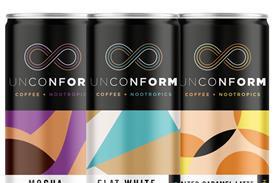

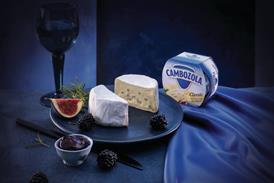
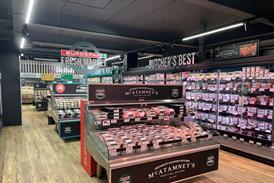

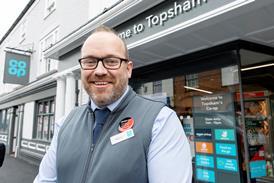

![WG-4003[58]](https://d2dyh47stel7w4.cloudfront.net/Pictures/274x183/4/5/1/353451_wg400358_6083.jpg)








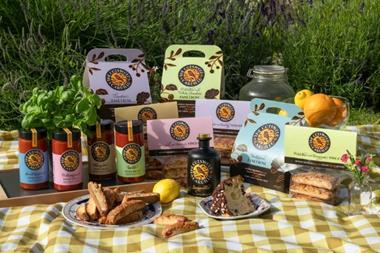



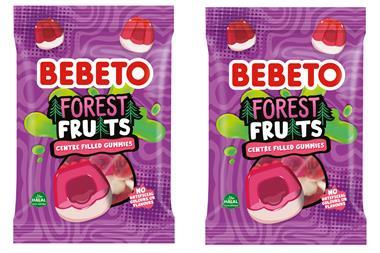
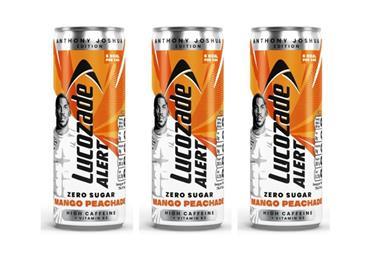

No comments yet